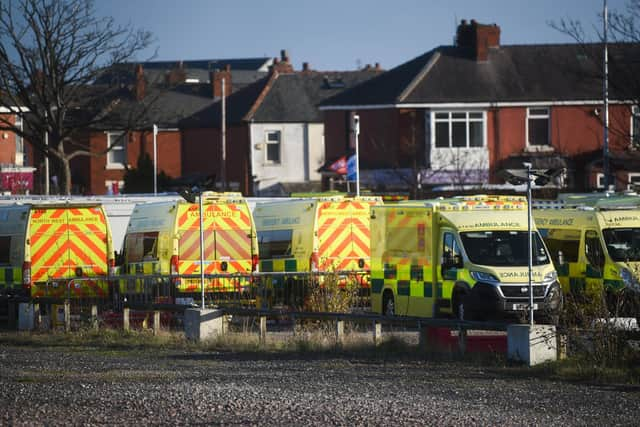The Government does not have a vision to tackle the crisis in emergency healthcare - Baroness Armstrong
Our report explores the causes of this crisis and how to make sure that people can get lifesaving care when they need it.
The country faces a national emergency. Almost every week we hear stories of patients waiting hours in crowded A&Es, of ambulances waiting for hours outside those A&Es, and not able to get to patients, who wait hours for lifesaving care.
Advertisement
Hide AdAdvertisement
Hide AdPeople are, increasingly, going to emergency care services because they have, or feel they have, no other choice.


Patients can’t see their GPs, and can’t get support from social care, community, and mental health services.
The Government recently announced a plan to improve emergency care. It comes too late for this winter crisis, and it is not the emergency response we need.
A central tenet of the Government’s plan for the NHS are new ‘Integrated Care Systems’, partnerships which bring together different areas of health and care, and make sure services are working together. They are new, and we hope they will help the situation.
Advertisement
Hide AdAdvertisement
Hide AdLen Richards, a CEO of Mid Yorkshire Hospitals Trust, told my Committee that some care homes wouldn’t take patients because they couldn’t accept the risk of looking after them – leaving people stuck in hospital.
We know the end result of this: ambulances stuck, unable to respond to calls, and people waiting at home without the emergency care they needed.
Len told us the way forward was a more joined-up approach, with specific services accepting more patients – and more risk - so ambulances could get back on the street and out to people – bringing the overall risk to patients down.
The Government is relying on Integrated Care Systems to achieve this kind of joined-up thinking, and deliver their emergency care plan, but we found it hard to pin down how these systems would be held to account, and how they could actually get services to do what’s needed. These are problems; if they aren’t addressed the plan will not work.
Advertisement
Hide AdAdvertisement
Hide AdSmaller changes could help, too. Professor Leo McCann, of the University of York, told the Committee that 111 call services regularly send people to ambulances or to A&E when there might be other options.
We know that only clinicians can take those calculated decisions, so I am glad that the Government has committed to put more clinicians in 111 services. We still need to know how many more, and when.
That’s not the only thing missing though. We found that emergency care services are working to an outdated model, with targets that don’t reflect reality. We called for a new model for emergency health services which sets out how emergency care links up with the rest of the health and care system.
The Government’s plan does not have this vision. Without it, we will not have the emergency care system that we need.
Baroness Armstrong of Hill Top is the former chair of the Public Services Committee and was a Labour MP for North West Durham from 1987 to 2010.